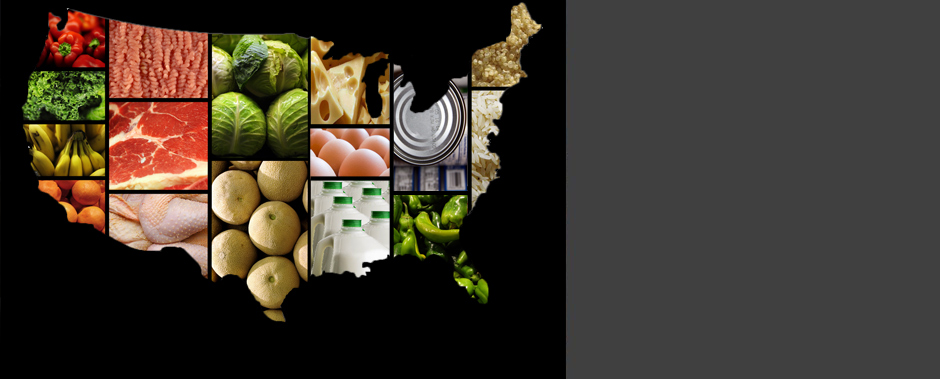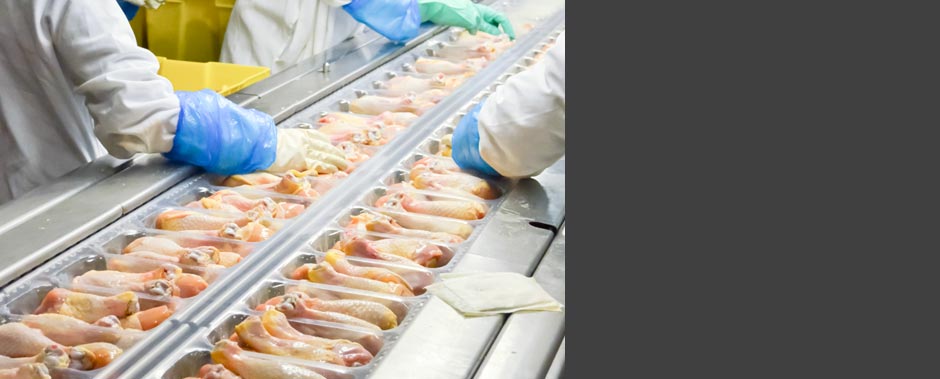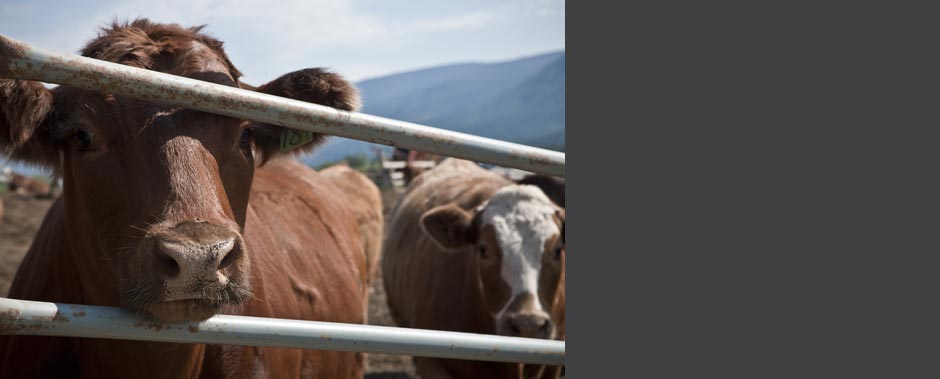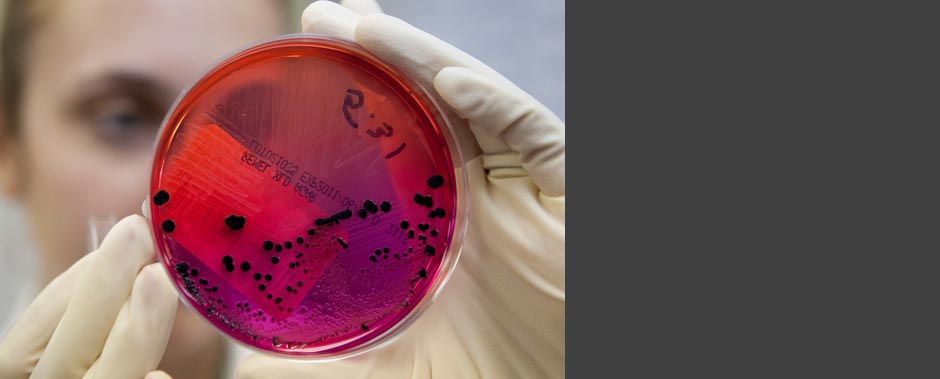





A NEWS 21 NATIONAL INVESTIGATION
HOW SAFE IS
YOUR FOOD?
Foodborne illness strikes tens of millions of Americans each year — killing thousands — because the nation’s food safety system is dangerously fragmented, underfunded, undercut by politics and overwhelmed by a rising tide of food imports.
A NEWS 21 NATIONAL INVESTIGATION
CONTAMINATION
RISKS ARE
EVERYWHERE
No progress has been made in stopping the spread of salmonella, the leading cause of foodborne illness in the U.S. Meat and poultry, eggs, fruits and vegetables and even pastries are all at risk.
A NEWS 21 NATIONAL INVESTIGATION
FOOD IMPORTS GET LITTLE
SCRUTINY
More and more food is being imported into the U.S., but only a fraction is inspected at borders by an underfunded and overwhelmed FDA, exposing Americans to filthy fish and contaminated produce from countries with lower safety standards.
A NEWS 21 NATIONAL INVESTIGATION
SYSTEM FAILS
TO CATCH
PROBLEMS
Every year, nearly three million Americans are sickened by harmful bacteria in meat and poultry. A regulatory system that relies largely on self-regulation is being extended to produce, even though the FDA may not be ready to enforce it.
A NEWS 21 NATIONAL INVESTIGATION
THE DANGERS OF BUYING LOCAL
Small produce farms are exempt from a new national food safety law, despite a lack of evidence that their food is safer to eat. Although farmers markets selling local food are growing in popularity, they tend to get less oversight.
A NEWS 21 NATIONAL INVESTIGATION
SLOW STATES
LEAVE NATION
VULNERABLE
The performance of state and local health departments, often the last line of defense against the spread of foodborne illnesses, is spotty and inconsistent, allowing outbreaks to spread and contaminated food to remain on the market.
How Safe Is Your Food?
Investigation: Foodborne illness strikes tens of millions of Americans each year, killing thousands and hospitalizing hundreds of thousands more, because the nation’s food safety system is dangerously fragmented, underfunded, undercut by politics and overwhelmed by a rising tide of food imports from countries with even lower safety barriers.
Farm to Fork: See how typical foods – hamburgers, chicken breasts, shrimp, eggs, cheese, bell peppers, sprouts and strawberries – can be contaminated by dangerous pathogens from the farm to your plate.
Imports
Filthy Seafood: Although most of the seafood Americans eat is imported, only 1 percent is inspected before it comes into the U. S., and a sizeable portion of that is rejected as filthy or tainted with banned drug residue. Take the quiz to see if you can identify popular kinds of seafood.
Border Inspections: A rare behind-the-scenes look at border inspection and testing facilities in Southern California shows how federal investigators try to catch contaminated and mislabeled food imports using long-standing techniques like smell testing by an inspector known as “The Nose.”
Cantaloupe: A salmonella outbreak in Oregon and other states is traced to imported cantaloupe grown on a farm in Guatemala, raising questions about how foodborne illness outbreaks are investigated and the steps authorities take to stop them from spreading.
Local
Small Farms: Tens of thousands of small farms throughout the country are exempt from a new national food safety law, thanks to a powerful coalition of small farmers, locally grown food enthusiasts and tea party small government advocates.
Locavores: The popularity of food from mostly unregulated small farms and farmers markets is growing, although there is no evidence that the food is any safer to eat.
Farmers Markets: Contaminated chicken, unsafe conditions and unlawful sales are found at farmers markets in Washington, including at the Agriculture Department.
Response
State Reporting: A News21 analysis of federal and state records shows that differences among states in reporting foodborne illnesses hinder authorities in identifying the sources of outbreaks before they spread around the country, threatening more Americans with sickness and death.
News21 Database: Check on your state’s record.
National Leader: One state has become a national model for investigating and reporting foodborne disease outbreaks.
New Tests: Faster tests for infectious diseases that speed up treatment of patients could understate the incidence of foodborne E. coli 0157 illnesses.
Risks
Salmonella: No progress is being made in stopping salmonella contamination of poultry, the leading cause of foodborne illness, as it spreads from farms and chicken houses to slaughterhouses and processing plants, stores, restaurants and homes.
Danger Points: See the 11 points during a chicken’s life that could reduce salmonella contamination in eggs and what can be done to stop it.
Egg Risks: Big egg companies avoid changes that could reduce salmonella contamination in eggs — for about two-tenths of a cent per dozen — even though a voluntary program in Pennsylvania is working.
Unhealthy Produce: Salmonella has been showing up on fruits and vegetables, a vital part of a healthy diet, sickening thousands and confounding growers and government regulators.
Pastry Deaths: A deadly salmonella outbreak from pastries distributed to seniors and churchgoers for a Catholic holy day in Rhode Island reveals failures in food handling safety and shortcomings in underfunded state inspections.
Antibiotics: Farmers and ranchers still use large amounts of antibiotics, producing dangerous antibiotic-resistant bacteria in meat and poultry.
Pesticides: Federal approval of the chemical aldicarb for farming continues despite its documented health hazards, illustrating how special interests influence food safety policy.
Safety
Inspection Gaps: Carcass-by-carcass slaughterhouse inspections and company self-regulation plans fail to prevent recalls of millions of pounds of contaminated meat and poultry approved for sale and consumption by the U.S. Department of Agriculture.
Feces: See how animal feces can contaminate foods ranging from meat to dairy products and fruits and vegetables — and what can be done about it.
Enforcement: The Food and Drug Administration’s record in enforcing safety plans for seafood and juice processors raise questions about the agency’s ability to step up oversight of fruits and vegetables as newly mandated by Congress.
Traceability: The produce industry is promising an electronic system to better track contaminated fruits and vegetables to farms and processing plants, while consumer advocates remain skeptical.
Organics: For all their health benefits and growing popularity, organically grown fruits and vegetables are just as vulnerable to contamination by dangerous pathogens as non-organic produce.
Kosher: Preparation of kosher food, rather than the ritual slaughter of kosher meat and poultry, is key to whether it is safer to eat.
Safety Solutions: News21 offers a range of tips and tools for safe handling of food. Download phone apps in English and Spanish.
About
About the Food Safety Project: “How Safe is Your Food?” was reported and produced by student journalists in the Carnegie-Knight News21 program.
Join News21 for 2012: This investigative program is now open to select students and faculty.
Safety Solutions: News21 offers a range of tips and tools for safe handling of food. Download phone apps in English and Spanish.
E-book: Read the entire series on your iPad, iPhone or Kindle.
Photo credits: Brandon Quester (map illustration and cantaloupe); Jeffrey Benzing (poultry); Bill Warchol (cattle); Stephanie Snyder (market); Kyle Bruggeman (petri dish)

